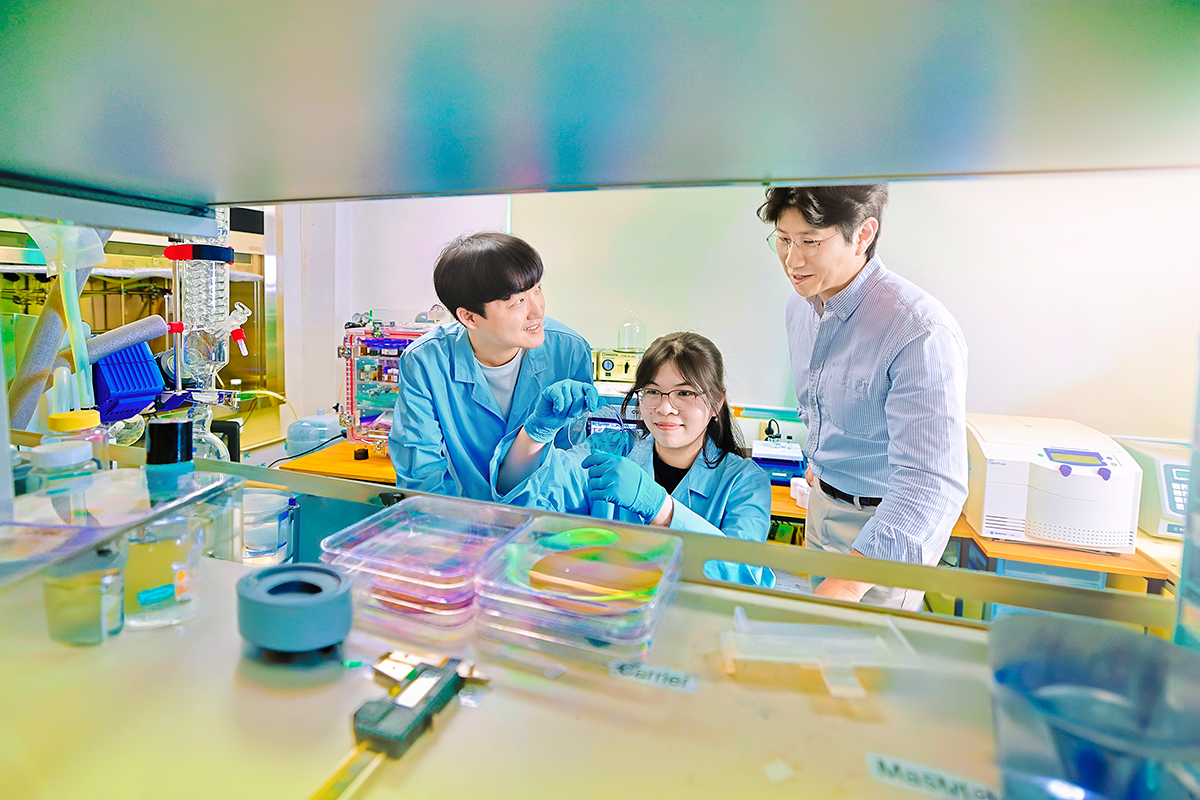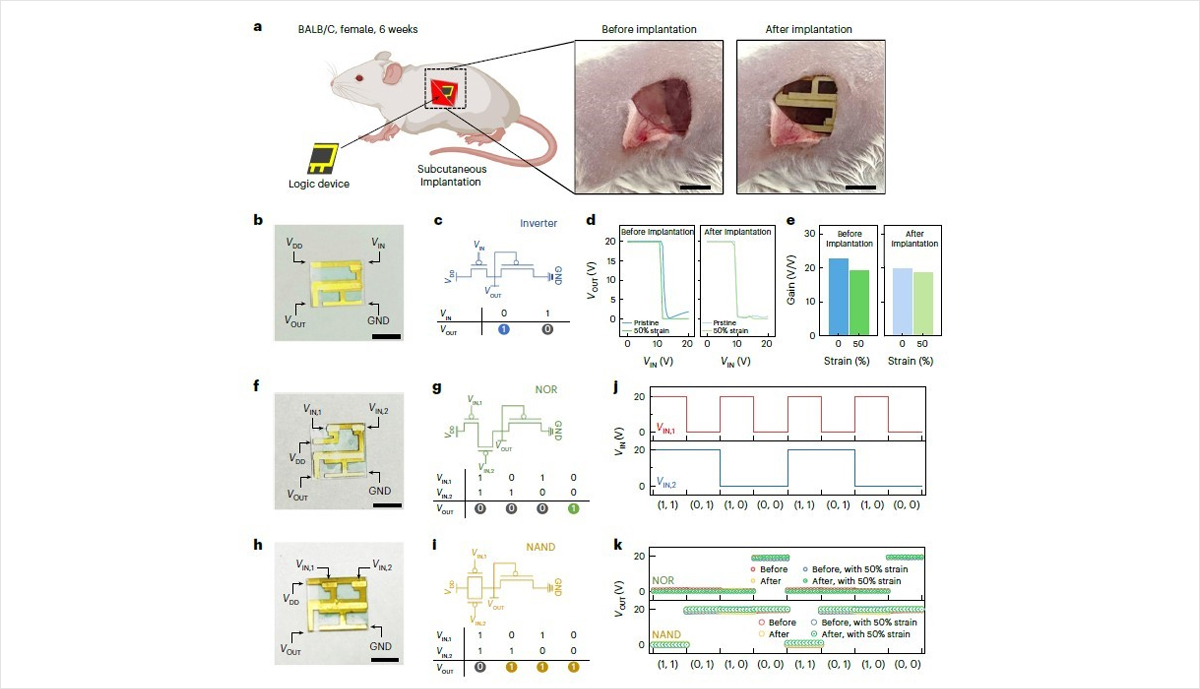header
News
New Stretchable Semiconductors for Next-Generation Implantable Bio-Instruments
- WRITER 학무부총장실

Professor Jin Young Oh's research team at the Department of Chemical Engineering has developed a biocompatible, stretchable semiconductor that overcomes previous limitations and enables safe implantation of electronic devices into the body
Bio-implantable electronic devices can monitor various biometric data in real time and deliver therapeutic stimulation inside the body. Recently, these devices have been paired with artificial intelligence, attracting attention beyond the medical industry as a next-generation form factor after smartphones. Yet commercially available bio-implantable electronic devices still rely on rigid, silicon-based semiconductor-based electronic components, which can cause undesirable adverse effects such as inflammation and tissue damage in human skin and muscles. Professor Jin Young Oh's research team has fundamentally addressed this problem. The findings were published on September 2, 2025, in the international journal Nature Electronics (IF=40.9) under the title, “A biocompatible elastomeric organic transistor for implantable electronics.”
Development of a biocompatible, stretchable semiconductor by combining medical rubber and organic semiconductors
The research team combined medical rubber (BIIR) with a high-performance organic semiconductor (DPPT-TT) to create a stretchable semiconductor that is as soft and stretchable as human skin while operating reliably within the body. A vulcanization process using sulfur atoms ensured mechanical durability and chemical stability, and the application of a gold-silver dual metal electrode secured reliable long-term performance without corrosion even in bodily fluids. Compared with existing silicone-based materials, medical rubber offers lower cost, superior gas- and fluid-barrier properties, and superior antibacterial and chemical stability. Professor Oh explained, "This rediscovery of medical rubber, a material rarely attempted as an electronic medium, is significant in that it overcomes the limitations of implantable electronic devices.".

The team verified the device’s effectiveness through a series of experiments in diverse conditions. In vitro experiments using human skin and immune cells demonstrated no adverse effects on cell viability or gene expression, and antibacterial properties were also demonstrated. In vivo animal studies involved implanting subcutaneous implantation of the device in mice for 30 days, during which no inflammation or tissue damage was observed and the implanted semiconductor operated stably throughout.
The research team expanded the application potential of the newly developed semiconductor beyond the single transistor element to digital logic circuits and active matrix array structures by connecting multiple devices. This demonstrated stable operation within complex devices, such as actual medical devices. The developed device is expected to precisely monitor cardiac and neural signals and be applied to personalized treatment.
Paving the way for next-generation electronic device form factor beyond smartphones
This research presents a significant advancement toward next-generation electronic device form factors, evolving beyond conventional smartphones. The newly developed material is expected to serve as a key source material as electronic devices evolve into three-dimensional attachments or implantable devices. Professor Oh explained, "It can be applied to smart implants that precisely control drug release, and next-generation medical and rehabilitation devices combined with brain-machine interfaces."
The research team is developing neuromorphic semiconductor devices, next-generation semiconductors engineered to mimic the structure and operating principles of the human brain's neural network, thereby achieving ultra-low power and high-efficiency computation. Beyond hardware development, the team plans to integrate this research with artificial intelligence software to develop a comprehensive system capable of real-time analysis, learning, and evaluation of biosignals. Professor Oh said, "This groundbreaking research is the first example of simultaneously ensuring both stretchability and biostability in a semiconductor device, representing a turning point for accelerating the long-term commercialization of in-body electronic devices."